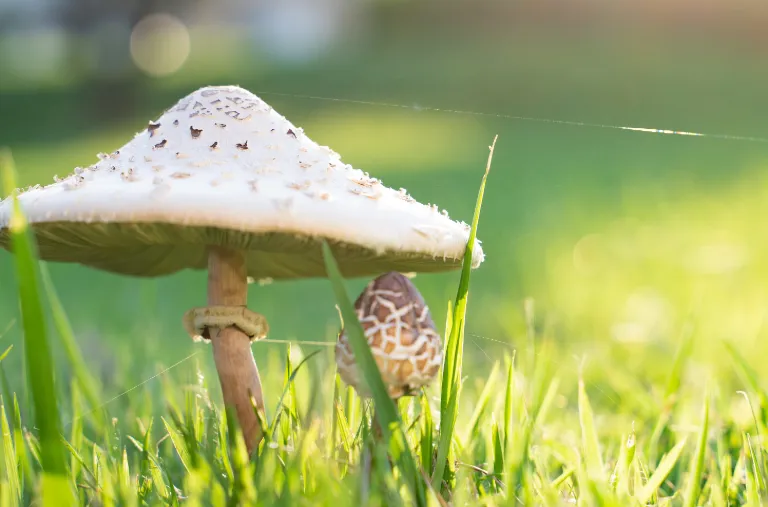Finding mushrooms sprouting up in your lawn can be a bit perplexing. One day your lawn looks perfect, and the next day, these little fungi have taken over. So, what’s the deal with mushrooms, and more importantly, how do you get rid of them? Let’s dive into understanding why mushrooms appear and the best strategies to manage them.
Why Do Mushrooms Grow in Lawns?
Mushrooms are the fruiting bodies of fungi that live in the soil. They thrive in moist, shaded environments and often appear after rainfall or overwatering. Here are a few reasons why you might see mushrooms in your lawn:
1. Decaying Organic Matter: Mushrooms break down organic material like dead roots, tree stumps, and other debris. If you have any decomposing material under your grass, it’s an ideal breeding ground for mushrooms.
2. Soil Conditions: Mushrooms prefer damp, well-aerated soil. Overwatering your lawn or having poor drainage can create an environment conducive to fungal growth.
3. Shade: Areas of your lawn that receive less sunlight tend to stay moist longer, making them perfect spots for mushrooms to thrive.
Are Mushrooms Harmful to Your Lawn?
Generally, mushrooms are not harmful to your lawn. They are a sign of healthy soil, breaking down organic matter and releasing nutrients back into the ground. However, some mushrooms can be toxic to pets and children, so it’s understandable if you want to remove them.
How to Get Rid of Mushrooms
If you want to rid your lawn of mushrooms, here are some effective methods:
1. Remove Organic Material: Identify and remove any decaying organic material under the lawn. This could involve digging up old tree stumps or roots that are decomposing.
2. Improve Drainage: Ensure your lawn has proper drainage. Aerate your lawn to allow better air circulation and reduce waterlogging. You might need to regrade parts of your lawn if water tends to pool.
3. Watering Practices: Adjust your watering schedule. Water deeply but less frequently to allow the soil to dry out between watering sessions. This discourages fungal growth.
4. Increase Sunlight: Trim back trees and shrubs that cast excessive shade on your lawn. More sunlight will help dry out the soil and reduce the conditions favorable to mushrooms.
5. Use Fungicide: As a last resort, you can apply a fungicide to your lawn. However, this should be done sparingly and as a part of a broader lawn care strategy, as overuse can harm the beneficial organisms in your soil.
6. Regular Maintenance: Keep your lawn well-maintained by mowing regularly, removing thatch, and overseeding to promote a dense and healthy turf that can naturally resist fungal intrusion.
Natural Remedies
For those who prefer organic methods, here are a couple of natural remedies:
– Vinegar Solution: Mix one part white vinegar with four parts water and spray directly on the mushrooms. Be cautious, as vinegar can also harm your grass.
– Baking Soda: Dissolve two tablespoons of baking soda in a gallon of water and spray the mixture on the affected areas. Baking soda can help raise the pH level of the soil, making it less hospitable to mushrooms.
Mushrooms in your lawn are a natural occurrence and often indicate good soil health.
However, if they become a nuisance, implementing the strategies mentioned above can help you manage and reduce their presence. Remember, the key to a mushroom-free lawn is maintaining proper lawn care practices that promote healthy, well-drained, and sunlit conditions.
By understanding why mushrooms appear and taking proactive steps, you can keep your lawn looking pristine and safe for all to enjoy.



